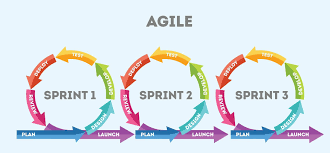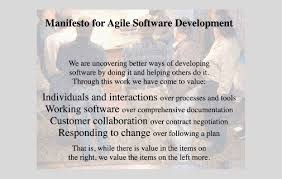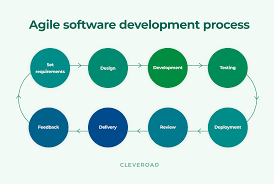Empowering Your Projects with an Agile Software Development Team
The Power of Agile Software Development Teams
Agile software development has revolutionized the way teams collaborate and deliver projects in the tech industry. An agile software development team is a group of professionals who work together in an iterative and incremental manner to create high-quality software products.
Key Characteristics of Agile Software Development Teams:
- Collaboration: Team members actively communicate and collaborate to achieve common goals.
- Adaptability: The team is flexible and can quickly respond to changes in requirements or priorities.
- Iterative Approach: Work is divided into short iterations, allowing for continuous feedback and improvement.
- Transparency: Progress is visible to all team members, promoting accountability and alignment.
- Cross-Functional Skills: Team members possess diverse skills to tackle various aspects of the project.
The Benefits of Agile Software Development Teams:
By embracing an agile approach, software development teams can enjoy several benefits, including:
- Rapid Delivery: Agile teams can deliver working software in short cycles, enabling faster time-to-market.
- Customer Satisfaction: Continuous feedback loops ensure that customer needs are met throughout the development process.
- Improved Quality: Regular testing and collaboration result in higher-quality software products.
- Enhanced Flexibility: Agile teams can adapt to changing requirements and market conditions more effectively.
- Innovation: Encouraging creativity and experimentation leads to innovative solutions and products.
In conclusion, agile software development teams are at the forefront of modern software development practices. By fostering collaboration, adaptability, and transparency, these teams are well-equipped to deliver value to customers efficiently and effectively. Embracing agility can lead to improved productivity, quality, and overall success for software development projects.
Top 6 Benefits of Agile Software Development: Speed, Satisfaction, and Innovation
- Faster time-to-market for software products
- Increased customer satisfaction through continuous feedback
- Improved product quality with regular testing and collaboration
- Enhanced flexibility to adapt to changing requirements
- Encouragement of creativity and innovation within the team
- Efficient delivery of value to customers through iterative development
Challenges of Agile Software Development: Communication Strain, Scope Creep, Documentation Gaps, and Cultural Resistance
- Increased dependency on constant communication and collaboration can be challenging for introverted team members.
- Frequent changes in project requirements may lead to scope creep and project delays.
- Lack of detailed documentation in agile processes can make it difficult to track and maintain a comprehensive project history.
- Adopting agile methodologies requires a significant cultural shift within an organization, which can be met with resistance from traditional stakeholders.
Faster time-to-market for software products
Agile software development teams excel in achieving faster time-to-market for software products by breaking down projects into smaller, manageable increments that can be delivered iteratively. This approach allows teams to prioritize features based on customer needs and market demands, ensuring that valuable functionalities are released quickly and continuously. By embracing agile methodologies such as Scrum or Kanban, teams can streamline development processes, promote collaboration, and adapt to changes efficiently, ultimately accelerating the delivery of high-quality software products to end-users.
Increased customer satisfaction through continuous feedback
One significant advantage of agile software development teams is the increased customer satisfaction achieved through continuous feedback. By maintaining open lines of communication and incorporating feedback loops throughout the development process, agile teams ensure that customer needs and preferences are consistently addressed and integrated into the evolving product. This iterative approach not only enhances the quality of the final software but also fosters a sense of collaboration and partnership with the customers, ultimately leading to higher levels of satisfaction and engagement.
Improved product quality with regular testing and collaboration
One of the key benefits of agile software development teams is the enhancement of product quality through regular testing and collaboration. By incorporating testing throughout the development process and fostering a culture of collaboration among team members, agile teams can identify and address issues early on, ensuring that the final product meets high standards of quality. This proactive approach not only results in fewer defects but also leads to a more robust and reliable software product that aligns closely with customer requirements.
Enhanced flexibility to adapt to changing requirements
One of the key advantages of an agile software development team is its enhanced flexibility to adapt to changing requirements. By embracing an iterative and incremental approach, agile teams can quickly respond to evolving project needs and market conditions. This flexibility allows the team to make timely adjustments, prioritize tasks effectively, and deliver value to stakeholders in a dynamic environment. Ultimately, the ability to adapt to changing requirements enables agile teams to stay responsive, efficient, and aligned with the evolving goals of the project.
Encouragement of creativity and innovation within the team
One significant advantage of agile software development teams is their encouragement of creativity and innovation within the team. By fostering a collaborative environment where team members are empowered to share ideas and experiment with new approaches, agile teams can unlock untapped potential and drive innovative solutions. This creative freedom not only boosts team morale but also leads to the development of unique and groundbreaking software products that can set a company apart in a competitive market.
Efficient delivery of value to customers through iterative development
One of the key advantages of agile software development teams is their ability to efficiently deliver value to customers through iterative development. By breaking down the project into manageable iterations and continuously delivering working software, agile teams can gather feedback early and often from stakeholders. This iterative approach allows for quick adjustments based on customer input, ensuring that the final product meets or exceeds customer expectations. Ultimately, this focus on iterative development enables agile teams to deliver value to customers in a timely manner while maintaining a high level of quality and customer satisfaction.
Increased dependency on constant communication and collaboration can be challenging for introverted team members.
The con of agile software development teams, where there is an increased dependency on constant communication and collaboration, can pose challenges for introverted team members. Introverts may find it overwhelming to engage in frequent interactions and group discussions required by the agile methodology. The pressure to communicate openly and collaborate actively can be draining for introverted individuals who thrive in solitary work environments. This dependency on communication may hinder the productivity and morale of introverted team members, highlighting the importance of creating a balanced work environment that accommodates different personality types within agile teams.
Frequent changes in project requirements may lead to scope creep and project delays.
Frequent changes in project requirements within an agile software development team can pose a significant challenge by potentially leading to scope creep and project delays. As the team adapts to evolving client needs or market conditions, there is a risk of expanding the project scope beyond its original boundaries, resulting in additional work that may not have been accounted for in the initial planning stages. This scope creep can disrupt timelines and increase development efforts, ultimately causing delays in project delivery. It is crucial for agile teams to establish clear communication channels and robust change management processes to mitigate the impact of frequent requirement changes and maintain project efficiency.
Lack of detailed documentation in agile processes can make it difficult to track and maintain a comprehensive project history.
In agile software development teams, one notable con is the potential lack of detailed documentation, which can pose challenges in tracking and maintaining a comprehensive project history. Due to the iterative and dynamic nature of agile processes, emphasis is often placed on working software over extensive documentation. This can lead to gaps in project documentation, making it harder to trace back decisions, changes, and progress over time. Without thorough documentation, team members may struggle to understand the evolution of the project and maintain a clear historical record of key milestones and decisions.
Adopting agile methodologies requires a significant cultural shift within an organization, which can be met with resistance from traditional stakeholders.
Adopting agile methodologies within an organization necessitates a substantial cultural shift, which may encounter resistance from traditional stakeholders. The transition to agile software development teams often challenges established norms and processes, leading to skepticism and pushback from individuals accustomed to more traditional project management approaches. Overcoming this con of agile adoption requires effective communication, education, and a gradual cultural transformation to align all stakeholders with the principles and practices of agility.










